
Multi fandom. Eng/Rus. 23 y. o. She/Her. MBTI: INFP. Sun Sagittarius. Rising Taurus. Moon Pisces. Ravenclaw House.
381 posts
Latest Posts by queensolace - Page 13

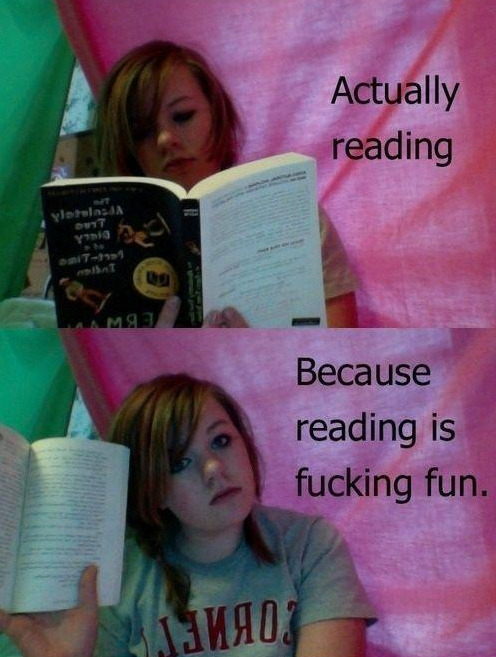


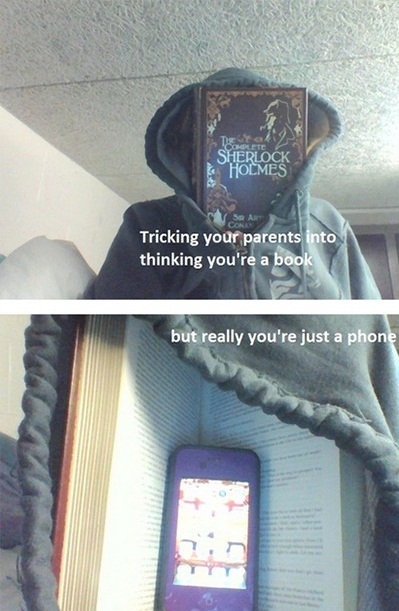

Console-free Camping
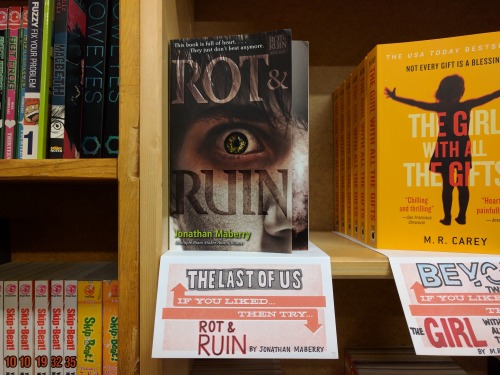
If you like to play The Last of Us, then try Rot & Ruin by Jonathan Maberry
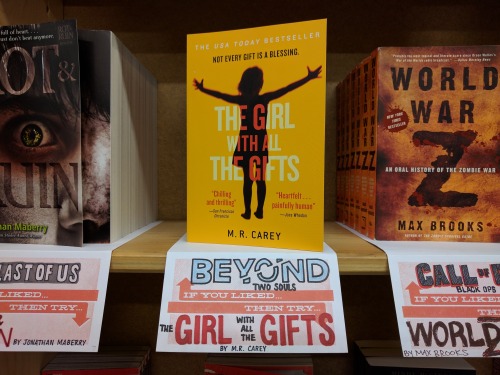
If you like to play Beyond: Two Souls, then try The Girl With All the Gifts by M.R. Carey

If you like to play Call of Duty: Black Ops (Zombies), then try World War Z by Max Brooks
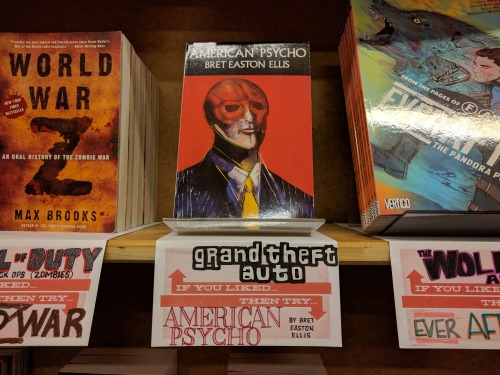
If you like playing Grand Theft Auto, then try American Psycho by Bret Easton Ellis
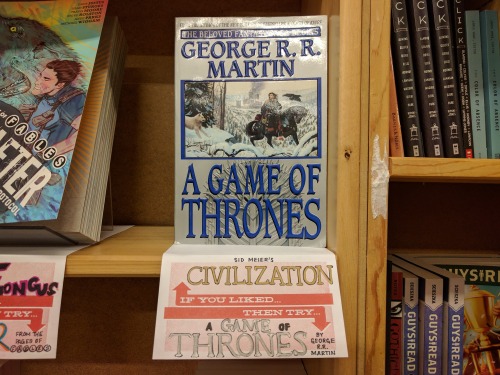
If you like playing Sid Meier’s Civilization, then try A Game Of Thrones by George R. R. Martin
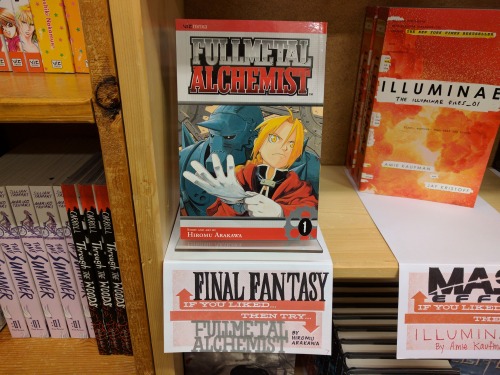
If you like playing Final Fantasy, try playing Fullmetal Alchemist by Hiromu Arakawa

If you like playing Mass Effect, then try Illuminae by Amie Kaufman and Jay Kristoff
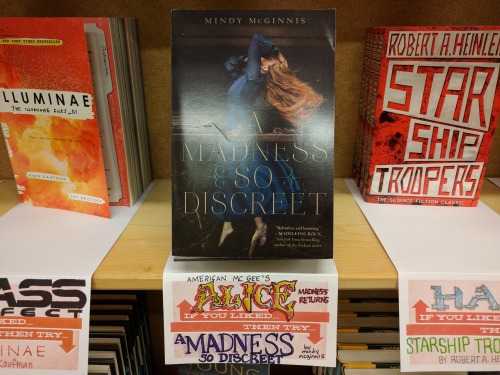
If you like playing Alice: Madness Returns, then try Madness So Discreet by Mindy McGinnis
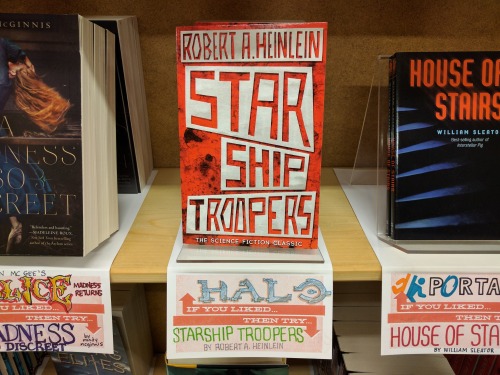
If you like playing Halo, then try Starship Troopers by Robert A Heinlein

If you like playing Portal, then try House Of Stairs by William Sleator
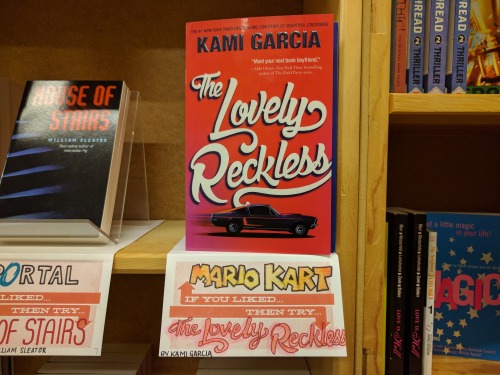
If you like playing Mario Kart, then try The Lovely Reckless by Kami Garcia
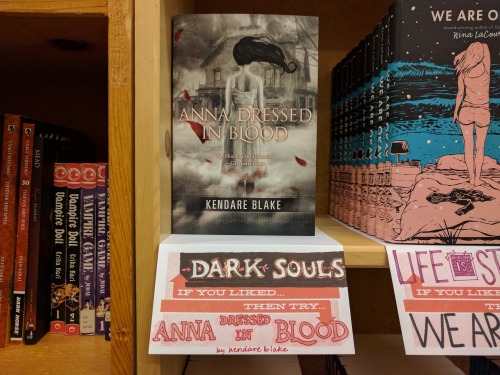
If you like playing Dark Souls, then try Anna Dressed in Blood by Kendare Blake

If you like playing Life Is Strange, then try We Are Okay by Nina Lacour
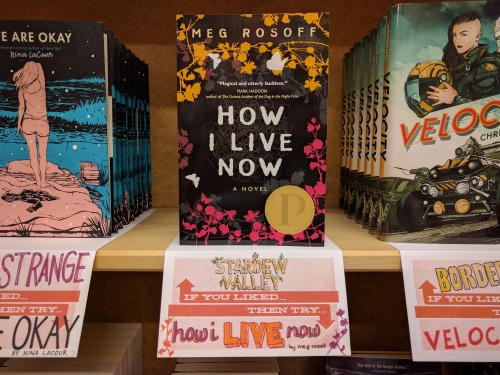
If you like playing Stardew Valley, then try How I Live Now by Meg Rosoff
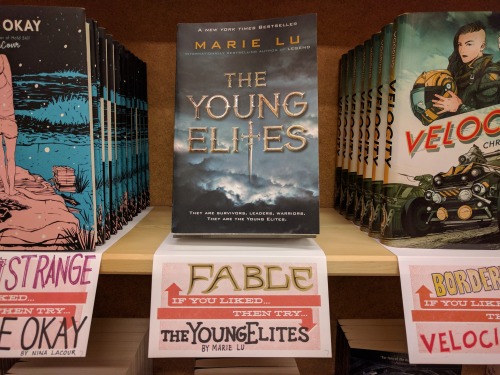
If you like playing Fable, then try Young Elites by Marie Lu

If you like playing Borderlands, then try Velocity by Chris Wooding
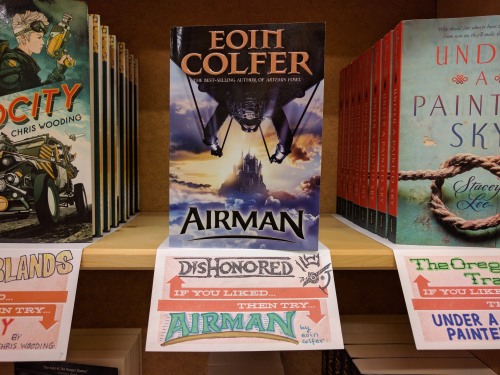
If you like playing Dishonored, then try Airman by Eoin Colfer
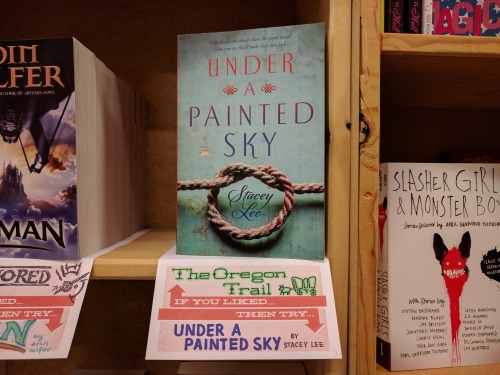
If you like playing The Oregon Trail, then try Under a Painted Sky by Stacey Lee
If you like playing the Elder Scrolls series, then try The Naming by Alison Croggon
If you like playing Red Dead Redemption, then try Vengeance Road by Erin Bowman
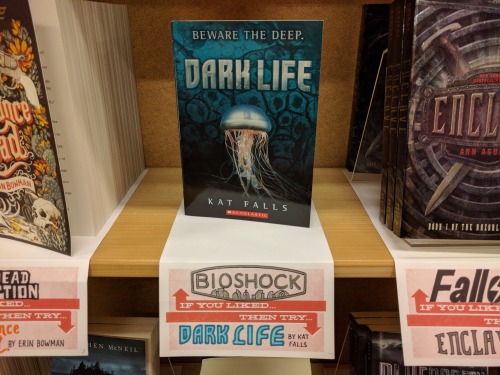
If you like playing Bioshock, then try Dark Life by Kat Falls

If you like playing Fallout, then try Razorland by Ann Aguirre

If you like playing Assasin’s Creed, then try The Way of Shadows Night by Brent Weeks
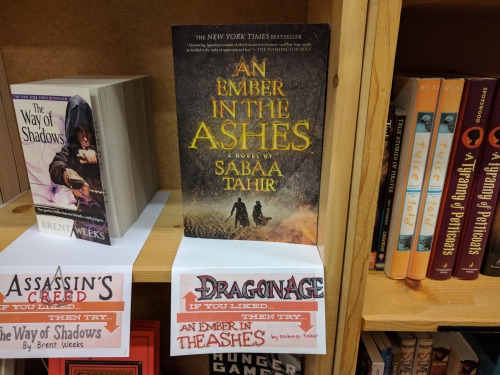
If you like playing Dragonage, then try Ember in the Ashes by Sabaa Tahir
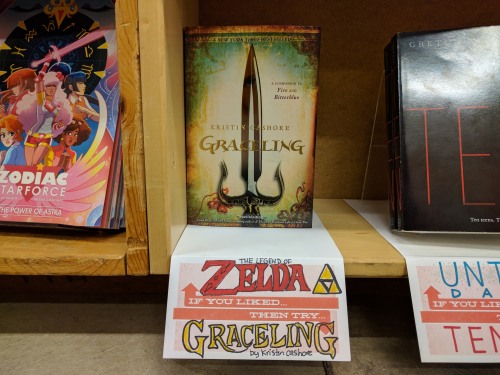
If you like playing The Legend of Zelda, then try Graceling by Kristin Cashore
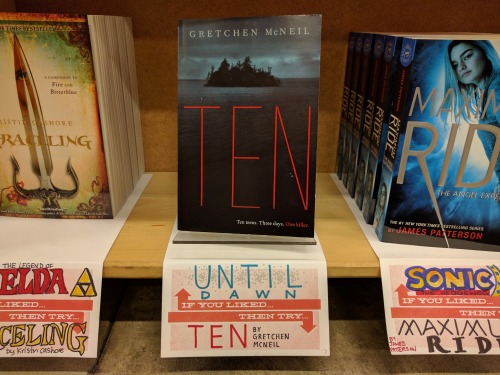
If you like playing Until Dawn, then try Ten by Gretchen McNeil
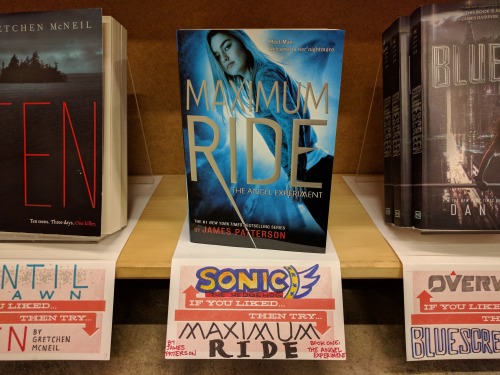
If you like playing Sonic, then try Maximum Ride by James Patterson
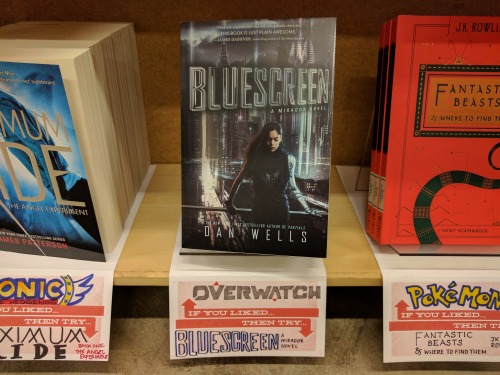
If you like playing Overwatch, then try Bluescreen by Dan Wells
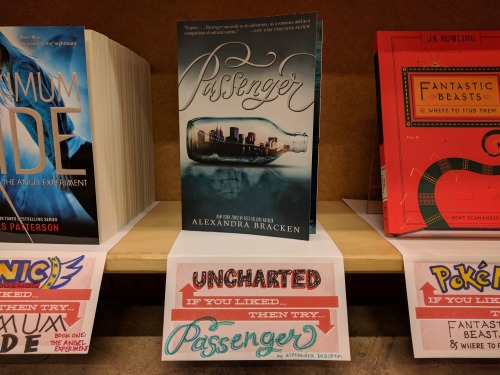
If you like playing Uncharted, then try Passenger by Alexandra Bracken

If you like playing Pokemon, then try Fantastic Beasts & Where to Find Them by JK Rowling, and Newt Scamander
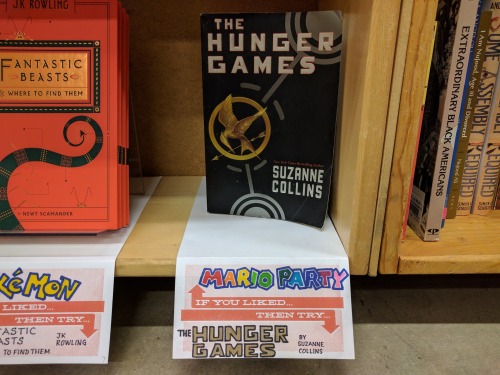
If you like playing Mario Party, then try Hunger Games by Suzanne Collins

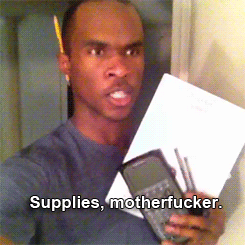
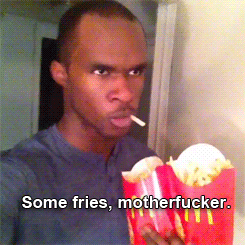
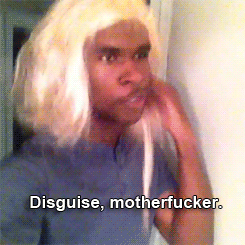
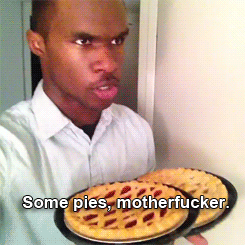



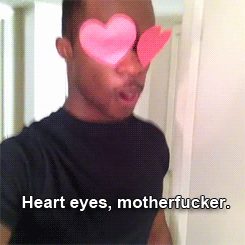
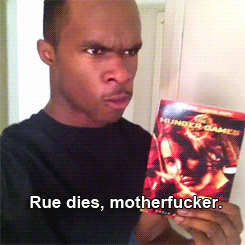
Hi my name is Yuki Dark'ness Dementia Maeda Way and I have short ginger hair (that's how I got my name) that reaches my shoulders and big doe brown eyes and a lot of people tell me I look like Utsuro (AN: if you don't know who he is get da hell out of here). My teeth are straight and white and I have a pale white skin. I'm an Ultimate Lucky Student and I go to a special school called Hope's Peak Academy in Japan. I'm an emo (in case you couldn't tell). Today I was wearing a brown jacket, a white shirt, an orange vest, a red tie, grey pants, brown shoes and a wristwatch. I was walking outside Monocruise. It was sunny and warm which I was very neutral to. A lot of Voids stared at me. I put up my middle finger at them.
Pip alter ego’s
We had our little adorable Pip…

And then…

Pip on ice

Mafia Pip

Country Pip

Exorcist Pip

Soldier/Titan Pip

Wizard Pip

College student Pip

Porn star Pip
Did i forget someone? -goes to cry-

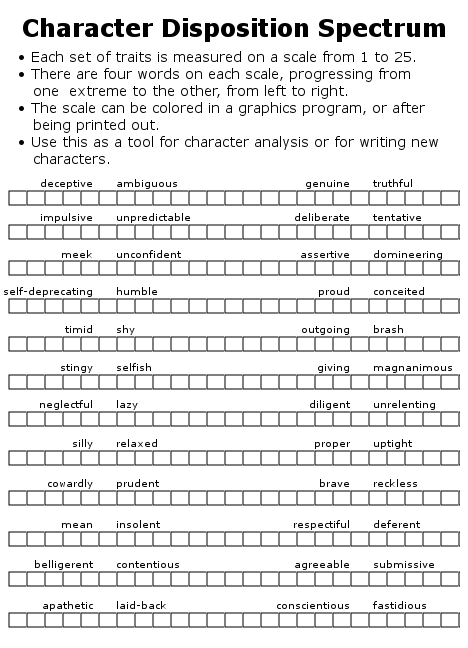
Have a chart I developed for visualizing the disposition of your character! This is partly inspired by a chart I saw of Aristotle’s Golden Mean, which is a system he had for developing good character, but of course, this is more about gauging a character’s traits than bringing them into any kind of balance.
For a printable PDF version of the chart please follow this link.
Resources For Describing Emotion

Emotions
Without Making Your Character Feel Too Self Aware
Showing Emotion Without Telling About It
Emotions Associated With Body Language
Telling Readers What The Character Doesn’t Want To Show
Hiding Emotions
Expressing Cardinal Emotions: Masculine vs. Feminine
Writing Extreme Emotion Without Melodrama
Specific Emotions
Conveying Shock
Conveying Embarrassment
Conveying Disappointment
Conveying Love/Attraction
Conveying Annoyance
Conveying Relief
Conveying Uncertainty
Conveying Impatience
Conveying Shame
Conveying Resentment
Conveying Panic
Conveying Guilt
Conveying Desperation
Conveying Sarcasm & Verbal Disrespect
Conveying Confusion
Conveying Stubbornness
Conveying Frustration
Conveying Indifference
Conveying Indignation
Conveying Confidence & Pride
Conveying Smugness
Conveying Enthusiasm
Conveying Curiosity
Conveying Hopefulness
Conveying Unease
Conveying Reluctance
Conveying Worry
Conveying Humility & Meekness
Conveying Happiness & Joy
Conveying Amusement
Conveying Disgust
Conveying Resignation
Conveying Jealousy
Conveying Anticipation
Conveying Contentment
Conveying Defeat
Conveying Excitement
Conveying Fear
Conveying Hatred
Conveying Hurt
Conveying Being Overwhelmed
Conveying Sadness & Grief
Conveying Satisfaction
Conveying Somberness
Conveying Sympathy & Empathy
Conveying Wariness
Conveying Defensiveness
Conveying Desire
Conveying Doubt
Conveying Energy
Conveying Exhaustion
Conveying Hunger
Conveying Loneliness
Conveying Physical Pain
Emotional Wounds
A Role Model Who Disappoints
A Sibling’s Betrayal
A Speech Impediment
Becoming a Caregiver at an Early Age
Being Bullied
Being Fired or Laid Off
Being Held Captive
Being Mugged
Being Publicly Humiliated
Being Raised by Neglectful Parents
Being Raised by Overprotective Parents
Being So Beautiful It’s All People See
Being the Victim of a Vicious Rumor
Being Stalked
Being Trapped in a Collapsed Building
Being Unfairly Blamed For The Death of Another
Childhood Sexual Abuse (by a family member or known person)
Discovering One’s Parent is a Monster
Discovering One’s Sibling was Abused
Experiencing a Miscarriage or Stillbirth
Failing At School
Failing To Do The Right Thing
Financial Ruin Due To A Spouse’s Irresponsibility
Finding Out One’s Child Was Abused
Finding Out One Was Adopted
Getting Lost In a Natural Environment
Growing Up In A Cult
Growing Up in a Dangerous Neighborhood
Growing Up In Foster Care
Growing Up In The Public Eye
Growing Up In The Shadow of a Successful Sibling
Growing Up with a Sibling Who Has a Chronic Disability or Illness
Having Parents Who Favored One Child Over Another
Having To Kill Another Person To Survive
Infertility
Infidelity (emotional or physical)
Losing a Limb
Losing a Loved One To A Random Act of Violence
Making a Very Public Mistake
Overly Critical or Strict Parents
Physical Disfigurement
Rejection By One’s Peers
Telling The Truth But Not Being Believed
The Death of a Child On One’s Watch
Victimization via Identity Theft
Watching A Loved One Die
Wrongful Imprisonment
Spending Time In Jail
Suffering From a Learning Disability
Motivation
Achieving Spiritual Enlightenment
Avoiding Certain Death
Avoiding Financial Ruin
Beating a Diagnosis or Condition
Being Acknowledged and Appreciated by Family
Being a Leader of Others
Being the Best At Something
Caring for an Aging Parent
Carrying on a Legacy
Catching The Bad Guy or Girl
Coming To Grips With Mental Illness
Discovering One’s True Self
Escaping a Dangerous Life one Doesn’t Want
Escaping a Killer
Escaping a Widespread Disaster
Escaping Confinement
Escaping Homelessness
Escaping Invaders
Finding Friendship or Companionship
Finding a Lifelong Partner
Having a Child
Helping a Loved One See They Are Hurting Themselves and Others
Obtaining Shelter From The Elements
Overcoming Abuse and Learning To Trust
Overcoming Addiction
Protecting One’s Home or Property
Pursuing Justice For Oneself or Others
Realizing a Dream
Reconciling with an Estranged Family Member
Rescuing a Loved One From a Captor
Restoring A Name or Reputation
Righting a Deep Wrong
Seeking Out One’s Biological Roots
Stopping an Event From Happening
Trying Again When One Has Previously Failed
Support Wordsnstuff!
Request A Writing Help Post/Themed Playlist/Writing Tips!
Send Me Poetry To Feature On Our Instagram!
Receive Updates & Participate In Polls On Our Twitter!
Like us and share on Facebook!
Read More On Our Masterlist & See our Frequently Asked Questions!
Tag What You Want Me To See With #wordsnstuff!
Participate in monthly writing challenges!
Oc Asks Game
So I decided to make this because I want to get to know my OCs better and all of yours as well. Here is a short collection of asks but here is the rule: Reblog from somebody and you have to send them an ask, its only polite after all.
What is your character's reaction to a minor inconvenience? Such as getting their jumper caught on a door handle?
Tea, coffee, hot chocolate or other?
What does their safe space look like?
What do they consider to be an unforgivable action? Why?
Do they have any nicknames or pet names or other aliases?
What kind of books comfort them? What books help them heal after a hard day?
Are they a naturally assertive person or are they painfully shy?
Do they consider themselves a friendly person or aloof?
What is your character's trigger point? What makes them angry, sad or makes them go off?
What kind of jokes make them laugh?
Do they enjoy pranks or do they hate them? Are they likely to fall for a prank?
Are they an overall healthy person? Do they make for a good patient or a terror?
Describe your character's typical wardrobe for the regular day.
Are they a simple person to please or difficult?
What is the first thing people notice about them?
What do they look for in a friend? A love interest?
Who are they soft for? Do they find being soft easy or difficult?
Describe your character through a Brooklyn 99 gif or line.
What does your character consider to be their lowest point?
Does your character have a comfort item?
What would be one item that they would hate to lose most?
What are their eating habits like? Do they snack throughout the day? Or do they eat sparsely?
What is your character's favourite food and who cooks it best?
What are your character's special skills?
What are somethings they find difficult to do? Or say?
Are they an animal person? Do they have pets?
What are their opinions on children? Do they view children as sweet angels or evil crotch goblins?
If your character was in today's world, what social media platforms would they avoid? Or be prominent on?
Are they an organised person? Or more laissez-faire?
Do they dwell better in chaotic situations or more linear situations?
Your character has been invited to a masquerade ball. What mask do they wear?
Your character is having a prom night/debs. What kind of outfit do they wear?
How do they act around people they don't know? Are they shy around strangers or dismissive of them?
Can your character drive? If so, what kind of driver are they? If not what's their preferred manner of transport?
What attracts your character to another person? What kind of person do they do for?
Tell us something about your OC that doesn't make it onto the page?
Your character has been kidnapped. Who has kidnapped them and how do they escape?
How does your character unwind after a long day?
What's your character's guilty pleasure?
Your character's friend has just been mugged. What's their reaction?
Your character has been punched into the face. What's their reaction?
Does your character celebrate their birthday? If not, why?
What is the DND alignment?
Hogwarts House?
Star Sign?
Does your character believe in anything? Religion? Superstition?
What is your character's reaction when someone does something nice for them?
Is your character easy to make cry? Or angry? Or annoyed?
What is your character's biggest fear? Most irrational?
How does your sleep at night? Are they a heavy or light sleeper? Do they dream or have nightmares? Do they find it easy to sleep or are they more a night owl?

220 Scents
This is a companion resource to Words To Describe Scent.
Arguably our most evocative sense, the sense of smell is an underused tool in writing descriptions and settings. Nothing transports me into the book I’m reading as effectively as the memory of some familiar scent, or some distant one awoken from the deepest parts of my brain. This is simply a list of recognizable scents, categorized by the “type” of scent or the kind of environment where it might be found:
(1) Natural scents are those that your character may expect to find in relatively undeveloped areas like while hiking a mountain, on a quest through a dark forest, or during an epic faceoff with their arch nemesis on a beach in the rain. These may also be found in more developed areas like a local park, and even in a peaceful oasis in a highly industrial area.
(2) Fruit/Vegetable scents are useful in many settings, so your character doesn’t have to work on a farm to use this list – though it certainly would come in handy for a farm setting! Our characters encounter these scents in the homes of loved ones, in inns where they rest for the night during a long journey, and while running through the palace orchard to warn the King of an impending attack.
(3) Florals, Herbs & Spices – perhaps the most fragrant and versatile category. Floral descriptions may be used for bouquets at an old flame’s wedding, or for a lover’s perfume left over on the pillow. Your character may encounter herbs & spices anywhere from a busy street market to a witch’s brew in an isolated mountain house.
(4) Industrial scents are those, in general, associated with humans, civilization, and development. These will typically be found in cities or wherever there are people. You may also notice that most of these would be generally considered unpleasant. That’s not to say pleasant scents don’t exist where there is development, just that the development itself usually doesn’t smell great. The beautiful scents from any of the other four categories can be, and often are, found in developed areas… especially those of the last category:
(5) Food! Your character’s favorite café, their mother’s kitchen when they were a child, the lunch their best friend used to share with them, the last Christmas meal at their ex-lover’s home, the cocktail they were drinking when they met their arch nemesis – the list is endless and endlessly evocative.
Use wisely and enjoy!
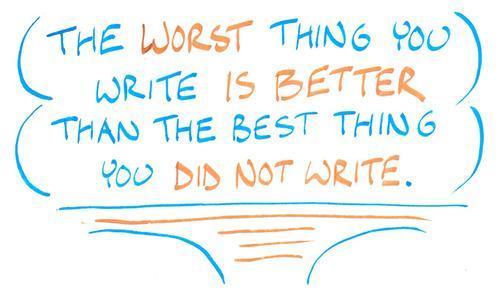
I've seen you write some really great in-depth things about firearms and most of it goes way over my head. There are words that I recognize as having to do with guns, and I have no idea what they mean. Any chance you could give kind of a brief Guns And Characters That Shoot Them 101 crash course for those of us who might work with characters that use guns and don't want to sound like idiots while writing them, but aren't necessarily going into the nitty-gritty details of gunfighting scenes?
Let’s see what I can do. Fair warning, there’s probably going to be a few very minor technical inaccuracies. I’m typing this off the top of my head.
Gun: pretty much any gunpowder based weapon. This includes both hand weapons and artillery. It does not (normally) include weapons that fire self-propelled ordinance, such as a missile launcher.
Gunpowder: This is actually a catch all term. Early gunpowder (now called “black powder) was mixed from saltpeter (potassium nitrate), charcoal, and sulfur. Modern firearms use variations of smokeless powder, originally developed in the late 19th century. Black Powder is still used with some antique and replica weapons.
As an academic distinction, it’s worth pointing out that gunpowder isn’t actually explosive, it just burns very aggressively, which results in the expansion of gas and bushing the bullet into motion. Unburned powder that remains in the gun is a persistent headache in gun design, and why guns need to be cleaned frequently.
A tiny amount of an explosive, called the Primer, is used to get the powder burning. Historically this has included substances such as picric acid and nitroglycerin. I believe modern primers use lead styphnate, but I’m honestly not sure, off the top of my head.
Cartridge: The entire package of a bullet, powder, and primer. In modern weapons, the container itself is referred to as a shell casing. The shell casing can also be referred to as a shell or casing, independent of the other.
Shell casings are sometimes referred to, idiomatically as “brass” because it is the most common material, though aluminum and other soft metals are used.
Idiomatically, shotgun cartridges are referred to as shells. Historically these were frequently made from paper. Modern shells use corrugated plastic, color coded to denote the contents.
After having been fired, a cartridge (or shell) is referred to as “spent.”
Firearms/Small Arms: Firearms, primarily refer to handheld gunpowder weapons. Small Arms refer to guns with a bore diameter (literally the size of the barrel) smaller than an inch.
Bore: This is the literal hole in the center of the barrel, that the projectile(s) travel through.
Chamber/Battery: Both terms are technically correct. This refers to where the bullet resides when the weapon is ready to fire. If a weapon’s chamber is empty, it is impossible to fire it.
Chambered: Both the state of a round being in the chamber, ready to fire, and a term that refers to the cartridge size a firearm has been designed to accept. Examples: “Chambered in .308.” “It has a round chambered.”
Incidentally, “rechambering” a weapon refers to changing the rounds a weapon will accept, removing a round and loading a fresh one is cycling (see below). Rechambering a weapon usually involves replacing the barrel, action, and magazine. Though it can be more involved if alternate parts aren’t available.
Action: The mechanical systems that clear and replace the bullet in the chamber whenever the weapon is fired. We’ll come back to this with a couple varieties in a bit.
Cycle: The actual process of the action functioning. Depending on the firearm, this can either occur automatically with each trigger pull, or it can require a direct user input.
Receiver: The physical housing that holds the action.
Hammer: a physical component behind the pistol which strikes the firing pin. Not all firearms have one.
Bolt: This is the component that actually locks the cartridge in the chamber, when the weapon is ready to fire.
Firing Pin: This is a small metal cylinder pin which (in modern firearms) strikes the back of the cartridge, detonating the primer, igniting the powder. Usually this is a separate articulated component, though some weapons have a simple stud soldered onto the bolt.
Open Bolt/Closed Bolt: This refers to which configuration the weapon fires from. Technically the bolt needs to be closed in order to actually get the bullet moving.
With an open bolt design, the act of dropping the bolt will detonate the primer. This is primarily used with fully automatic weapons (see below). The bolt will fall, igniting the primer, recoil will send the bolt back, and the return spring will cause it to close, firing again.
Magazine: This is where rounds are stored inside of the weapon, before firing. The action will extract a round from the magazine each time it is cycled. Depending on the firearm, this may be removable.
Clip: A device used to load a firearm’s magazine. This is NOT interchangeable terms. Usually these are short metal strips that grip the base of the shell, though speedloaders for revolvers sometimes qualify as clips.
Clips can be used with modern weapons to quickly reload box magazines, but they’re somewhat uncommon.
If the firearm’s reloading process involves loading the rounds and then ejecting the clip, that’s, well, a clip. If the reloading process involves removing an empty container, and loading a fresh one, that’s a magazine.
Few things will irritate someone with firearms training faster than mixing these terms up.
Rifles: The term actually refers to two separate things. Rifling are mildly spiraling lands and grooves cut into the barrel of a gun. This prevents the bullet from tumbling once it leaves the barrel, and massively improves accuracy. Rifles originally referred to any firearm that featured a rifled barrel. However, the term is no longer inclusive, because handguns and other non-rifles include rifled barrels.
Handgun: A smaller version of a firearm that can be operated with one hand. This term is inclusive of several different varieties of firearm. It should be noted: you should not use a handgun one handed, but it is possible.
Pistol: This refers to nearly every handgun, except revolvers.
Revolver: A firearm that rotates to feed rounds into the chamber. Most often this refers to handguns, though some grenade launchers also use a revolver design. Revolver rifles, carbines, and shotguns exist, but are rare. There is a small gap between the cylinder and the barrel, which tends to vent burning powder when fired, which makes revolvers with a fore grip unpleasant to use. That is to say, they’ll try to set your shirt or arm on fire.
Shotgun: This refers to a weapon designed to handle unusually large cartridges, holding multiple projectiles. These are frequently smooth-bore (see below), but rifled shotguns do exist. In modern combat, shotguns are more characterized by their ability to accept a wide variety of projectiles to accommodate different situations. Shotguns can be loaded with everything from water (disruptor shells), to grenades (FRAG-12s).
Smooth-Bore: A barrel without any rifling. Most common with shotguns. This favors projectiles that will somehow self stabilize (such as flechette darts, yes, it’s another shotgun shell variety), or fire multiple simultaneous projectiles (such as a shotgun).
Single Shot: This refers to a weapon that can be fired once, and then must be reloaded. This includes muskets and some shotguns.
Semi-Automatic: A non-revolver firearm that will fire a round with each pull of the trigger until the magazine is depleted. Critically, the weapon must do this automatically as a result of firing. If a weapon needs to be manually cycled, such as a bolt or lever action, it is a repeater, and not semi-automatic. In any case where “automatic” is paired with another word, it can be abbreviated as “auto.”Automatic: A firearm that will fire multiple rounds with each pull of the trigger. Also sometimes referred to as Fully Automatic. Idiomatically, semi-automatic pistols are sometimes referred to as “Automatics.” This is incorrect on a technical level, but the actual meaning is, usually, understood.
Burst Fire: An automatic firearm that fires a specific number of rounds with each pull of the trigger and then stops. Three round burst settings are the most common, though two round burst weapons have proven popular in some circles.
Select Fire: An automatic firearm that can be switched between multiple fire configurations. Most often this allows switching the weapon between semi-auto and full auto, or semi-auto and a burst fire setting. Select fire almost always includes a semi-auto setting. It can include multiple other settings, including (rarely) both 2 and 3 round burst settings.
Single Action: A firearm where pulling the trigger will not cock the hammer. This is intermittently used as a safety feature on modern handguns. It is also somewhat common among sport revolvers, and antique revolvers.
Single Action firearms often have a much lighter trigger pull (the force needed to draw the trigger and fire the weapon). This allows for greater accuracy. It also allows automatics to be carried with a round in the chamber and the hammer down, without risk of the weapon firing as a result of an errant trigger pull. It’s still shouldn’t happen with safe weapon handling, but it is another safety feature.
Double Action: A firearm where pulling the trigger will cock the hammer. Almost all revolvers intended for practical use include this. It’s inclusion with semi-automatic pistols varies widely.
The complicated issue with single and double action handguns comes from semi-auto pistols. When the slide cycles, it will recock the hammer, this means a single action pistol can be fired repeatedly, without having to manually recock the hammer.
SAO/DAO: Single Action Only/Double Action Only. These terms get applied to pistols because there are pistols designed to switch between single and double action based on a variety of control parameters.
For example: pulling the slide back ~1/4″ on a Walther P99 will switch it from single to double action, and vise versa. Though it also exists in SAO and DAO variants that remove this feature and lock the action in one of the modes.
Bolt Action: A firearm where the bolt must be unlocked and manually cycled by the user. This allows for substantially heavier loads than any other style of firearm. Though it is a popular configuration for hunting and varmint rifles.
Lever Action: A firearm where the action is cycled by use of a lever, usually mounted under the handgrip. Originally these allowed for faster cycling than a bolt action weapon. These are fairly uncommon now.
Pump Action: A firearm that cycles the action by use of an articulated foregrip. This is normally seen on shotguns, though a few pump action rifle models probably exist.
Machine Gun: This refers to a fully automatic weapon. By itself the term is antiquated. Most often, when someone uses the term, they’re incorrectly referring to an Assault Rifle.
Assault Rifle: A select fire weapon chambered in an “intermediate” rifle round. Usually between 5mm and 6mm. Note: these do not always include full auto settings. The modern M16 variants can only be fired in semi-automatic or 3 round burst.
Battle Rifle: A select fire weapon chambered in a high power rifle round (roughly 7.6mm). This includes the M14 and AK47/AKM. Misidentifying a battle rifle as an assault rifle is… eh. It happens.
Carbine: A shortened rifle. Usually assigned for use in tight quarters, or vehicle crews. Historically these were also issued to cavalry. Sometimes issued to support personnel, depending on the military.
Light Machine Gun: Also sometimes referred to as a Squad Support Weapon is an unusually heavy automatic rifle intended for use in suppression. Sometimes abbreviated LMG.
Submachine Gun: An automatic weapon chambered to fire a pistol round. Sometimes abbreviated SMG.
Machine Pistol: A submachine gun that retains an overall pistol design. Informally, these terms can get mixed up pretty heavily.
Caliber: This is the imperial system of measuring bullet diameter. It’s expressed as a period with a two digit number. (EG: .45 or .38) This indicates the size of the cartridge in 100ths of an inch. So .50 is, roughly, half an inch in diameter. Additional digits beyond the first two denote differences in the cartridge, but not significant changes in the cartridge size. (EG: .308, .303, 30.06 are all .30 caliber rounds, roughly.)
Gauge: The imperial system for measuring the size of a shotgun shell. This one’s a little more idiosyncratic. It’s calculated based on the weight of a solid ball of lead, that barrel would accommodate. So 12 gauge will fit a single 1/12th pound ball of lead. This also means, as the gauge goes up, the size shrinks. 20 Gauge shells are significantly smaller than 12 gauge, for example. This is abbreviated as “ga”, so “410ga” would indicate a 410 shell.
Millimeter (mm): The metric system for measuring the size of a bullet. Usually expressed as a simple value. (EG: 9mm or 5.56mm). When multiple cartridges exist that are of similar sizes, other terms will be applied. (Technically, this also occurs with calibers. For example: .357 Magnum, and .357 SIG.) With metric measurements, the length is frequently added to distinguish two similar rounds, (for example: 9x19mm vs 9x18mm) or some other distinguishing characteristic. (for example: 9mm Parabellum vs 9mm Makarov). Usually you do not need to include both together. For example: 9x19mm Parabellum would be redundant, because 9mm Parabellum is a 9x19mm round.
Grain: The amount of powder loaded with a bullet. (Literally, an archaic unit of measurement.) Bullets in a specific caliber are usually available with multiple grain variants. For example: .45 ACP is commercially available anywhere from 185 grain to 230 grain.
Handload: The act of manufacturing your own bullets. Also a term for non-standard rounds produced this way.
Load: A term for the individual characteristics of a round that go beyond the size of the bullet. This includes the grain, and may include the kind of bullets (see below).
Magnum: A term denoting an unusually high grain load. Most commonly associated with the .357 Magnum and .44 Magnum rounds. Though other magnum rounds exist.
Ball: A bullet with a rounded tip. The most common kind of ammunition for handguns.
Hollowpoint: A bullet with a divotted tip. On impact, it causes the bullet to expand flattening. In a human body, this can sometimes sheer apart, and can cause catastrophic internal damage.While illegal, an individual can add a small high explosive to the tip of a hollowpoint round, converting it into an improvised high explosive round. The most commonly available materials that would react appropriately are primers.
Wadcutter: A bullet with a flat tip. Usually employed in target shooting, to create clean holes in targets.
[Material] Jacketed: Frequently copper, though other soft metals are sometimes used. This is used to partially shield the user from the bullet’s lead, and the associated health risks.
[Material] Core: Most often, the material is steel, though spent uranium (in this case, spent is a nuclear term, not the firearms meaning), is an exotic variant. The core will push through materials that would stop normal bullets. Lead shields the core from the barrel. (Firing a steel slug from a firearm would shred the rifling, so the softer metal contacts the metal.)
Tracer: A pyrotechnic round that ignites on contact with air and shows the shooter exactly where the round went. These are also mildly incendiary, and can start fires if they connect with something flammable on the other end.
I’m not going to give a full list of what you can stick in a shotgun, because it’s a very long list. But, a few quick highlights.
Buckshot: Ball bearings, usually lead or steel.
Slug: A single, solid, bullet.
Flechette: A steel dart, usually with fins to stabilize it in flight. Fired with a plastic sabot system that falls away once the dart is in the air.
FRAG-12: A small, impact detonated grenade, designed to be fired from a 12 gauge shotgun.
Flares: Commercial flare guns fire a low power 12 gauge shotgun shell. While you cannot load normal shotgun shells into a flare gun (it’s not designed for that kind of power, and will explode), 12 gauge flare shells can be loaded into a shotgun and fired. If the shotgun is semi-automatic the flare will probably not provide enough force to cycle the action, so the user will need to do that manually.
Dragon’s Breath: A shell loaded with a mix of oxygen igniting metals. Metallic Sodium and Potassium are most common. This creates the effect of the shotgun blasting flames.
I feel like I’ve only scratched the surface, and I know I’ve missed a few things. I’ll try to remember to revisit this in the near future.
Hope this helps some of you get started.
-Starke
This blog is supported through Patreon. If you enjoy our content, please consider becoming a Patron.

Caring for natural (curly) hair in a setting with no access to modern hair products
So it’s the apocalypse. Your curly-haired character is on the run. They find themselves on an adventure in a fantasy world. It’s a castaway story. Or the whatever-eth century and they’re in an environment that doesn’t exactly accommodate curly, coily haired types.
Either way, manufactured hair products are far and few between, or they’re simply not made for afro hair. Considering how your Black character handles their hair in this environment makes their circumstances more realistic and relatable.
Topics Featured in this Guide:
Hair Products found in Natural Environment
Hair Oils - Benefits and How To Extract
Protective Hair Techniques & Styles
Curly Hair Types & Hair Needs
Hair Routine Samples
Hair Straightening
FAQ
There is a writing takeaway at the end of each topic.
Brief descriptions provided after images. Contact me for fully accessible version.
Hair Products found in Natural Environment
Consider the essential needs of afro hair: water and fat.
Water (or liquid) is essential for nourishing the hair.
Fat (hair oils, creams, butters) is essential for both growth and protection.
Many curly-haired folks already use natural resources and plants to care for their hair - aka DIY hair-care. So characters concocting their own products should not be a strange concept. (I personally buy most of my natural hair products, and create my own hair masks, protein treatments, and oil blends.)
What they could use would depend on environment, time, and availability.
Hair Healthy Produce

Coconut - The all-purpose hair aid with multi forms, from oil to solid cream. Hardens in cold weather; best not to use when environment has freezing temps. Banana - Typically removed after use (hair masks, conditioners) Avocado - Applied as hair products, masks, and oils. Strawberry - Mashed and applied directly to hair or mixed with oils.
Hair Healthy Proteins, Plants, Fats

Eggs - Hardens when dry. Strong odor. Removed after use. (protein masks) Honey - Pulls moisture from air into hair - avoid during the dry winter! Shea Nuts - Made into shea butter. All-purpose hair and body care. Flaxseed - Gel made by boiling & straining flax seeds. Many DIY videos online.
Hair Healthy Herbs and Flora

Hibiscus - Sebaceous = oil-producing gland. Flowers crushed into paste or oil. Peppermint - Can rub out oil from leaves. Often used in oil form on scalp. Lavender - Often used as an oil directly applied to the scalp, or brewed as tea. Rosemary - Often combined with olive oil in use with hair; can be used alone.
More Hair Healthy Herbs and Flora

Aloe Vera - Succulent. Can extract sap directly from leaf and apply like gel. Burdock - Contains essential fatty acids and phytosterol compounds. Dandelion - Can use the roots, stems, leaves and sap for hair and skin. Rose - Common use is rose water: steep roses in boiling water to create.
Hair Healthy Products (rare or require effort to make/find)

Apple Cider Vinegar (ACV) - Diluted before use and often washed out after. Bentonite Clay - Aged volcanic ash. Combined with ACV for best activation. Oils - Key component for sealing moisture. See the next discussion. Yogurt - Base of many DIY hair products like masks and deep conditioners.
Oils for Hair
Oil is a key component to afro hair care. It nourishes and seals in moisture. Let’s discuss common hair oils and extraction methods that could, more likely, be done using homemade or historical equipment.
Oil Extraction
If oils aren’t readily available to purchase, the person would need to find or create tools to either extract the oil via pressing or heat the nuts or seeds. Consider the basic tools that have been around since ancient times. For example, the mortar and pestle. What creative use can be made out of existing tools in the person’s environment?
Hair Oils and Benefits (by potential ease to extract.)

Coconut Oil, Castor Oil, Almond Oil, Olive Oil, Avocado and Grapeseed Oil.

FYI: These aren’t the only methods or necessarily professional means of extraction. I also left off hair-healthy oils that seemed complicated to extract without high-grade equipment. So, this isn’t an all-inclusive list of oil or methods.
Natural Hair Product Creation
So what exactly would your character create? Here’s some natural hair products and potential main ingredients. May be used alone or combined.
Leave-in moisturizers: Plain water, coconut water, rose water
Leave-in creams: (protect/style) honey, shea, aloe vera, flaxseed, flora
Hair Cleansing Conditioner: plant water, coconut, honey, light oils
Hair Rinse/Co-wash: Apple cider vinegar, coconut, brewed tea water
Hair Masks: Mashed fruits, yogurt, proteins (eggs), clay, honey
DIY Recipe Search: Try keywords like “DIY natural hair” + “curly hair” “Afro hair” or search all natural hair products and read over the ingredient list. Try small home business and independent sellers (Like etsy)
More Sources:
15 DIY Hair Recipes for Almost Every Step in Your Regimen
14 Homemade Leave-in Conditioner Recipes
Best DIY Recipes for Naturally Curly Hair
Product Storage:
Most homemade products last everywhere from a few days - weeks
Extend the life of spoil-prone products via the cooling system in the work.
Honey does not spoil. Be mindful if it’s mixed with spoil-prone ingredients.
Oils can usually be kept at room temperature and last a long time.
Keeping a small bit of ready made supply may prove time-efficient. If impossible, they may opt to use products that don’t require much time and effort, and are worth their time to make in small batches or to potentially dispose of after.
Writing Takeaway - Natural Product/Oils Creation
With just the above compounds, I can see creative naturals being able to create styling products and moisturizing leave-ins, shampoos, conditioners and hair masks.
Do consider the following:
How simple or complex can their regimen be?
Would they rely more on protective hair styles in their situation?
What is the natural environment: what products are accessible?
How will they store products or must they make a new batch each use?
Can items be purchased by craftsmen or found in abandoned locations?
Can they afford to use edible plants if food is scarce? Food scraps and non-edible plants (like the flora) might be what they rely on.
What are their specific hair care needs? -Discussion on this later-
Natural Hair and Styling
LOC Method as base style
Moisture, sealing in the moisture, and protection are the basic needs for natural hair. The Liquid, Oil, and Cream (LOC) Method, or a variation of the steps, fulfills those basic needs. It can be treated as both a care routine and a style in itself. Personally, if my hair is not in a protective style, I use it every week.

Liquid - Liquid opens hair cuticles to allow moisture to enter hair strands.
Oil - Once cuticles are opened, the oil penetrates hair & seals in moisture.
Cream - Cream further locks in the moisture, and can be used as a styling agent as well to shape and define curls.
Should you use the “LOC method” by name in your work?
A modern setting? Sure. But don’t assume readers know what it means.
A fantasy setting? Probably not, unless earth and its terms carry over.
A historical setting? No. It is a newly coined term.
Protective Hair Styles
Protective hairstyles protect the hair by tucking ends away from the elements. For example, heat, air, hand and fabric manipulation. While not forever solutions (except maybe locs which are a permanent style) there’s many benefits to your character’s wearing them.
Benefits:
Hair growth retention
Saves time styling hair
Helps prevent damage and keep hair healthy
Ideal for any natural (the best style itself may depend on hair type)
Lessens hair’s need and dependence on moisture and hair products
Eliminates some hair maintenance activities (such as detangling)
Considerations:
Hair more difficult to wash and dry thoroughly.
Dryness (unable to access all tucked away hair to moisturize)
Styles kept in too long accumulates dead skin and product build up.
Uninstalling styles can be time consuming, and should be done gently.
Style gets frizzy from growth overtime and/or getting soaked in water.

Protective Styles Short-term (lasting days to weeks)
Afro puff(s) or bun(s)
Back Tuck or Roll and Tuck
Bantu knots
French roll
Pompadour
Roller set
Two-strand twists
Wash and go (low manipulation style)
Shaved (lower maintenance, but not an overnight decision)

Protective Styles Long-term (lasting weeks to months+)
Braids (endless styles and patterns. Typically smaller braids last longer)
Cornrows
Dreadlocks/locs (permanent style, research the hair care)
Extensions
Flat Twists /Twists
Head wraps and hats (endless wrapping styles, colors and patterns!)
Wigs (unless glued, hair maintained underneath or often put in braids)
Writing Takeaway - Protective Hairstyles
Protective styles are an amazing way to protect the character’s hair and would very likely be the go-to for any natural in an uncertain or fast-paced environment. Just in everyday life they’re highly worn so it would especially be the case! Just remember the character needs to eventually undo whatever protective style they have installed to do some hair maintenance (washing, detangling, etc) and give their strands a rest. Also, even hair in protective styles need some attention.
Curly Hair Type and Associated Needs
Determining your hair type is important to knowing its needs. Certain ingredients work best for certain hair types. However everyone is unique and there are more factors to consider than just curl pattern (Also, most curly folks cross into a mix of hair types). There is hair thickness (width & density) and how much moisture and product your hair absorbs (porosity) to consider as well.
I will only cover curl pattern and the commonly associated needs here. To learn more about porosity, width, and density check out the FAQ under the read more.
naturallycurly.com is a great resource and is the source for the images, terms, and information provided below.

Curly Twirly (3A)
Defined loopy “S” pattern. Curls well defined and springy. Big, loose and shiny. Size: Sidewalk chalk size. Best Products: Gels and creams with light moisture and curl definition.
Curly Spirally (3B)
Well-defined, springy copious curls that range from bouncy ringlets to tight corkscrews. Size: Sharpie size. Best Products: Gels and styling creams with extra moisture and frizz control.
Curly Kinky (3C)
Voluminous, tight corkscrew curls. Either kinky or very tightly curled, with lots of strands densely packed together. The very tight curls are usually fine in texture. Size: Pencil. Best Products: Styling creams, butters, and oils. Needs gentle care.

Coily Springy (4A)
Well-defined “S” Pattern. Tight, coily, and the most fragile curls. Size: Crochet Needle or smaller.
4A Best Products & Tips: Styling creams, butters, and oils.
Clarify scalp with tea tree or jojoba oil during washes
This hair needs extra moisture and tender care
Be gentle when handling and detangling hair to avoid stress & breakage
Use thick moisturizers like mango and shea butters to maximize styles
Coily Crimpy (4B)
Less-defined “Z” Pattern. Tight, coily fragile curls. Hair bends at sharp angles.
4B Best Products & Tips: Styling creams, butters, and oils.
Add moisturizing oils before washing (pre-poo/pre-shampoo) with coconut or castor oil to help retain the natural oils in scalp
Do heat-free styles on stretched hair for maximum definition and less frizz
Air-dry hair whenever possible, or use soft cloth to gently dry.
Terry cloth will strip hair’s natural moisture and cause tension on strands
Coily Ziggly (4C)
Tight, coily, fragile curls. Curl pattern won’t clump without styling. Little to no visible definition.
4C Best Products and Tips: Styling creams, butters, and oils.
Use a cleansing conditioner with slippery elm or marshmallow root
Use a creamy humectant [like honey] as a leave-in to maximize protection
A curl defining custard or gel can stretch the coils safely for styled looks
Read the full guide here: Curly Hair Guide: What’s YOUR Curl Pattern?
Writing Takeaway - Hair type and needs
While hair type is just the start of all the intricacies of natural hair needs, it’s definitely a good start. There are other important parts to consider for real life naturals, but going off from hair type and the commonly associated needs should be enough for a story. (But read the FAQ under the read more to keep learning)
Do not get lost in the details, especially for a story that won’t need to cover tons of it. Learn enough to know what you’re talking about and can describe hair care accurately for situations that would affect hair.
Writing Takeaway - Overall:
You don’t have to be lavish in detail, but acknowledging how hair is handled here and there or in a dedicated section is thoughtful and satisfying to see included. It’s also a neutral way to show race without the use of micro-aggressions or racism. Finding the time and means for proper hair care would be a part of their life and potentially a stumbling block on the adventure, so mentioning how hair is handled during these circumstances is a fine idea.
It’s also a great means for representation.
–Mod Colette
Additional Info:
The following information will be nestled under the read more:
Hair Routine Samples - One super simple and one complex hair routine
Hair Straightening - Not ideal to maintain in survival situations, but also was a means of survival and daily living during some historical contexts
FAQ - Would any of this matter during the apocalypse? And what about natural products that attract bugs? Plus more.
Keep reading
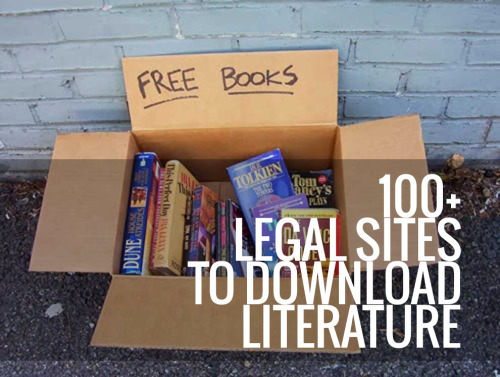
FAMOUS AUTHORS
Classic Bookshelf: This site has put classic novels online, from Charles Dickens to Charlotte Bronte.
The Online Books Page: The University of Pennsylvania hosts this book search and database.
Project Gutenberg: This famous site has over 27,000 free books online.
Page by Page Books: Find books by Sir Arthur Conan Doyle and H.G. Wells, as well as speeches from George W. Bush on this site.
Classic Book Library: Genres here include historical fiction, history, science fiction, mystery, romance and children’s literature, but they’re all classics.
Classic Reader: Here you can read Shakespeare, young adult fiction and more.
Read Print: From George Orwell to Alexandre Dumas to George Eliot to Charles Darwin, this online library is stocked with the best classics.
Planet eBook: Download free classic literature titles here, from Dostoevsky to D.H. Lawrence to Joseph Conrad.
The Spectator Project: Montclair State University’s project features full-text, online versions of The Spectator and The Tatler.
Bibliomania: This site has more than 2,000 classic texts, plus study guides and reference books.
Online Library of Literature: Find full and unabridged texts of classic literature, including the Bronte sisters, Mark Twain and more.
Bartleby: Bartleby has much more than just the classics, but its collection of anthologies and other important novels made it famous.
Fiction.us: Fiction.us has a huge selection of novels, including works by Lewis Carroll, Willa Cather, Sherwood Anderson, Flaubert, George Eliot, F. Scott Fitzgerald and others.
Free Classic Literature: Find British authors like Shakespeare and Sir Arthur Conan Doyle, plus other authors like Jules Verne, Mark Twain, and more.
TEXTBOOKS
Textbook Revolution: Find biology, business, engineering, mathematics and world history textbooks here.
Wikibooks: From cookbooks to the computing department, find instructional and educational materials here.
KnowThis Free Online Textbooks: Get directed to stats textbooks and more.
Online Medical Textbooks: Find books about plastic surgery, anatomy and more here.
Online Science and Math Textbooks: Access biochemistry, chemistry, aeronautics, medical manuals and other textbooks here.
MIT Open Courseware Supplemental Resources: Find free videos, textbooks and more on the subjects of mechanical engineering, mathematics, chemistry and more.
Flat World Knowledge: This innovative site has created an open college textbooks platform that will launch in January 2009.
Free Business Textbooks: Find free books to go along with accounting, economics and other business classes.
Light and Matter: Here you can access open source physics textbooks.
eMedicine: This project from WebMD is continuously updated and has articles and references on surgery, pediatrics and more.
MATH AND SCIENCE
FullBooks.com: This site has “thousands of full-text free books,” including a large amount of scientific essays and books.
Free online textbooks, lecture notes, tutorials and videos on mathematics: NYU links to several free resources for math students.
Online Mathematics Texts: Here you can find online textbooks likeElementary Linear Algebra and Complex Variables.
Science and Engineering Books for free download: These books range in topics from nanotechnology to compressible flow.
FreeScience.info: Find over 1800 math, engineering and science books here.
Free Tech Books: Computer programmers and computer science enthusiasts can find helpful books here.
CHILDREN’S BOOKS
byGosh: Find free illustrated children’s books and stories here.
Munseys: Munseys has nearly 2,000 children’s titles, plus books about religion, biographies and more.
International Children’s Digital Library: Find award-winning books and search by categories like age group, make believe books, true books or picture books.
Lookybook: Access children’s picture books here.
PHILOSOPHY AND RELIGION
Bored.com: Bored.com has music ebooks, cooking ebooks, and over 150 philosophy titles and over 1,000 religion titles.
Ideology.us: Here you’ll find works by Rene Descartes, Sigmund Freud, Karl Marx, David Hume and others.
Free Books on Yoga, Religion and Philosophy: Recent uploads to this site include Practical Lessons in Yoga and Philosophy of Dreams.
The Sociology of Religion: Read this book by Max Weber, here.
Religion eBooks: Read books about the Bible, Christian books, and more.
PLAYS
ReadBookOnline.net: Here you can read plays by Chekhov, Thomas Hardy, Ben Jonson, Shakespeare, Edgar Allan Poe and others.
Plays: Read Pygmalion, Uncle Vanya or The Playboy of the Western World here.
The Complete Works of William Shakespeare: MIT has made available all of Shakespeare’s comedies, tragedies, and histories.
Plays Online: This site catalogs “all the plays [they] know about that are available in full text versions online for free.”
ProPlay: This site has children’s plays, comedies, dramas and musicals.
MODERN FICTION, FANTASY AND ROMANCE
Public Bookshelf: Find romance novels, mysteries and more.
The Internet Book Database of Fiction: This forum features fantasy and graphic novels, anime, J.K. Rowling and more.
Free Online Novels: Here you can find Christian novels, fantasy and graphic novels, adventure books, horror books and more.
Foxglove: This British site has free novels, satire and short stories.
Baen Free Library: Find books by Scott Gier, Keith Laumer and others.
The Road to Romance: This website has books by Patricia Cornwell and other romance novelists.
Get Free Ebooks: This site’s largest collection includes fiction books.
John T. Cullen: Read short stories from John T. Cullen here.
SF and Fantasy Books Online: Books here include Arabian Nights,Aesop’s Fables and more.
Free Novels Online and Free Online Cyber-Books: This list contains mostly fantasy books.
FOREIGN LANGUAGE
Project Laurens Jz Coster: Find Dutch literature here.
ATHENA Textes Francais: Search by author’s name, French books, or books written by other authors but translated into French.
Liber Liber: Download Italian books here. Browse by author, title, or subject.
Biblioteca romaneasca: Find Romanian books on this site.
Bibliolteca Virtual Miguel de Cervantes: Look up authors to find a catalog of their available works on this Spanish site.
KEIMENA: This page is entirely in Greek, but if you’re looking for modern Greek literature, this is the place to access books online.
Proyecto Cervantes: Texas A&M’s Proyecto Cervantes has cataloged Cervantes’ work online.
Corpus Scriptorum Latinorum: Access many Latin texts here.
Project Runeberg: Find Scandinavian literature online here.
Italian Women Writers: This site provides information about Italian women authors and features full-text titles too.
Biblioteca Valenciana: Register to use this database of Catalan and Valencian books.
Ketab Farsi: Access literature and publications in Farsi from this site.
Afghanistan Digital Library: Powered by NYU, the Afghanistan Digital Library has works published between 1870 and 1930.
CELT: CELT stands for “the Corpus of Electronic Texts” features important historical literature and documents.
Projekt Gutenberg-DE: This easy-to-use database of German language texts lets you search by genres and author.
HISTORY AND CULTURE
LibriVox: LibriVox has a good selection of historical fiction.
The Perseus Project: Tufts’ Perseus Digital Library features titles from Ancient Rome and Greece, published in English and original languages.
Access Genealogy: Find literature about Native American history, the Scotch-Irish immigration in the 19th and 20th centuries, and more.
Free History Books: This collection features U.S. history books, including works by Paul Jennings, Sarah Morgan Dawson, Josiah Quincy and others.
Most Popular History Books: Free titles include Seven Days and Seven Nights by Alexander Szegedy and Autobiography of a Female Slave by Martha G. Browne.
RARE BOOKS
Questia: Questia has 5,000 books available for free, including rare books and classics.
ARTS AND ENTERTAINMENT
Books-On-Line: This large collection includes movie scripts, newer works, cookbooks and more.
Chest of Books: This site has a wide range of free books, including gardening and cooking books, home improvement books, craft and hobby books, art books and more.
Free e-Books: Find titles related to beauty and fashion, games, health, drama and more.
2020ok: Categories here include art, graphic design, performing arts, ethnic and national, careers, business and a lot more.
Free Art Books: Find artist books and art books in PDF format here.
Free Web design books: OnlineComputerBooks.com directs you to free web design books.
Free Music Books: Find sheet music, lyrics and books about music here.
Free Fashion Books: Costume and fashion books are linked to the Google Books page.
MYSTERY
MysteryNet: Read free short mystery stories on this site.
TopMystery.com: Read books by Edgar Allan Poe, Sir Arthur Conan Doyle, GK Chesterton and other mystery writers here.
Mystery Books: Read books by Sue Grafton and others.
POETRY
The Literature Network: This site features forums, a copy of The King James Bible, and over 3,000 short stories and poems.
Poetry: This list includes “The Raven,” “O Captain! My Captain!” and “The Ballad of Bonnie and Clyde.”
Poem Hunter: Find free poems, lyrics and quotations on this site.
Famous Poetry Online: Read limericks, love poetry, and poems by Robert Browning, Emily Dickinson, John Donne, Lord Byron and others.
Google Poetry: Google Books has a large selection of poetry, fromThe Canterbury Tales to Beowulf to Walt Whitman.
QuotesandPoem.com: Read poems by Maya Angelou, William Blake, Sylvia Plath and more.
CompleteClassics.com: Rudyard Kipling, Allen Ginsberg and Alfred Lord Tennyson are all featured here.
PinkPoem.com: On this site, you can download free poetry ebooks.
MISC
Banned Books: Here you can follow links of banned books to their full text online.
World eBook Library: This monstrous collection includes classics, encyclopedias, children’s books and a lot more.
DailyLit: DailyLit has everything from Moby Dick to the recent phenomenon, Skinny Bitch.
A Celebration of Women Writers: The University of Pennsylvania’s page for women writers includes Newbery winners.
Free Online Novels: These novels are fully online and range from romance to religious fiction to historical fiction.
ManyBooks.net: Download mysteries and other books for your iPhone or eBook reader here.
Authorama: Books here are pulled from Google Books and more. You’ll find history books, novels and more.
Prize-winning books online: Use this directory to connect to full-text copies of Newbery winners, Nobel Prize winners and Pulitzer winners.
DEAR RESEARCHERS OF TUMBLR
You know what’s awesome? Research. You know what’s not awesome? Not being able to get access to research because it’s stuck behind a paywall and you don’t belong to an institution/your institution doesn’t subscribe to that particular journal.
FEAR NOT.
Here is a list of free, open access materials on a variety of subjects. Feel free to add if you like!
GO FORTH AND LEARN SHIT, MY FRIENDS.
Directory of Open Access Journals- A compendium of over 9000 journals from 133 countries, multilingual and multidisciplinary.
Directory of Open Access Books- Like the above, but for ebooks. Also multidisciplinary.
Ubiquity Press- Journals covering archaeology, comics scholarship, museum studies, psychology, history, international development, and more. Also publishes open access ebooks on a wide variety of subjects.
Europeana- Digital library about the history and culture of Europe.
Digital Public Library of America- American history, culture, economics, SO MUCH AMERICA.
Internet Archive- In addition to books, they have music and videos, too. Free! And legal! They also have the Wayback Machine, which lets you see webpages as they looked at a particular time.
College and Research Libraries- Library science and information studies. Because that’s what I do.
Library of Congress Digital Collections- American history and culture, historic newspapers, sound recordings, photographs, and a ton of other neat stuff.
LSE Digital Library- London history, women’s history.
Wiley Open Access- Science things! Neurology, medicine, chemistry, ecology, engineering, food science, biology, psychology, veterinary medicine.
SpringerOpen- Mainly STEM journals, looooong list.
Elsevier Open Access- Elsevier’s kind of the devil but you might as well take advantage of this. Mainly STEM, also a linguistics journal and a medical journal in Spanish.
Can people please shut the fuck up about how “shipping every male character is harmful to the male friendship representation”
Literally almost every single peace of media has platonic male friendships in it and almost none of them ends up in a canon relationship. So there IS representation. Some people shipping those characters don’t take away their canon friendship.
And it doesn’t only happen to the male friendships. Every close female and male/female friendship you see on screen will always have people shipping them.
Because guess what? That’s how fandoms work. It doesn’t only happen with male friendships.
Are we really ignoring all the people who assume every man and woman who breaths the same air are canonically in love with each other? But somehow it’s only a problem when queer people do it.
Are we really ignoring how we get so little male/female friendships in media without writers turning it romantic at some point?
But we never get to see two close male leads of an action movie kissing at the end do we? So shut up about “friendship representation” You have tons of platonic friendships.
And the thing is, a lot of people who say this don’t even care about platonic friendships or mlm fetishization by straight girls. They’re just trying to find a way to put queer ships down. They never say “I think this two specific characters are good friends so I don’t like it when people ship them”
Instead, it’s always “these characters showed a little pinch of interest to opposite gender so they’re straight. just let people be friends and stop making everything gay”
Because they’re not actually mad about people shipping two close friends together. They’re mad about people offering the possibility of some fictional characters not being straight




